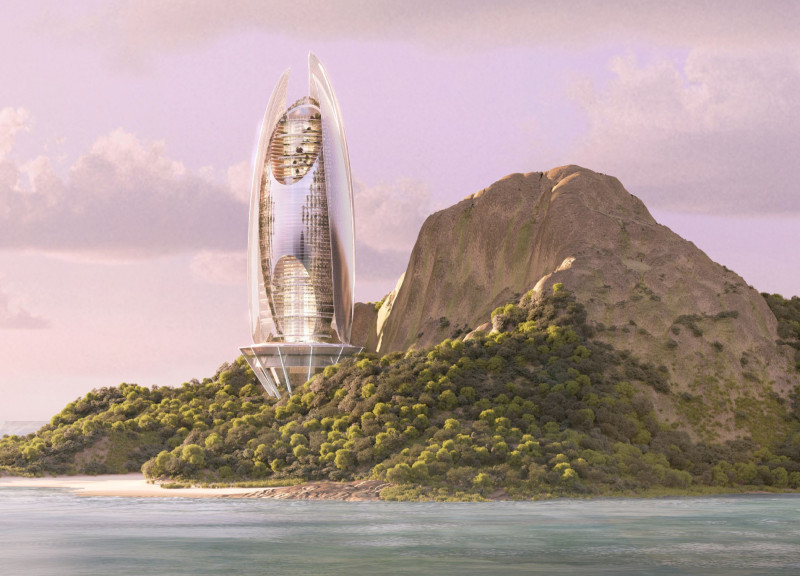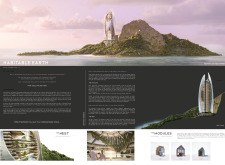5 key facts about this project
The primary function of this structure is to provide a multifaceted living environment that accommodates residential units, communal spaces, and green areas. The design reflects a commitment to fostering community interaction while ensuring individual privacy. Each apartment unit is part of a modular system, allowing flexibility in configuration to meet diverse lifestyle needs. This approach not only addresses the varying demands of residents but also allows for future adaptability as the urban landscape evolves.
The design emphasizes a strong connection to nature, realized through features such as "The Nest," an innovative elevated garden included within the structure. This space is designed to serve as a retreat from the urban environment, offering residents access to greenery and promoting biodiversity. By incorporating vertical gardens and communal terraces, the project enhances the quality of life for its inhabitants, encouraging social interaction and collaboration among diverse communities.
In terms of materiality, "Habitable Earth" utilizes a carefully selected palette to reflect its sustainable ethos. Reinforced concrete provides the necessary structural support, ensuring the building's integrity in a vertical formation. Extensive use of glass in the façade promotes natural illumination, reducing reliance on artificial lighting and creating a sense of openness. Sustainable timber is introduced within the modular components, contributing warmth and a tactile quality to the living spaces. Moreover, the implementation of green roof systems mitigates urban heat and contributes positively to the surrounding ecosystem.
A unique aspect of the design lies in its modularity, which allows for customization based on residents’ needs while maintaining a coherent architectural language. This adaptability not only makes the building relevant to contemporary urban challenges but also highlights the potential for future projects to embrace change. The organic forms and configurations used in the design echo patterns found in nature, promoting a sense of continuity between the built environment and the natural world.
The project challenges traditional notions of high-rise living by proposing a model that is not merely about maximizing vertical space but rather about creating a living environment that nurtures its residents and respects the ecosystem. "Habitable Earth" illustrates how architecture can address the complexities of modern life through innovative design approaches, prioritizing sustainability, community engagement, and aesthetic harmony.
To gain a deeper understanding of the architectural plans, sections, and designs that shape "Habitable Earth," it is highly recommended to explore the project presentation further. Delving into the architectural ideas behind this project will provide valuable insights into its intricacies and the thought processes that inform its design.























